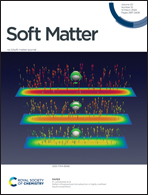Stability, biofunctional, and antimicrobial characteristics of cannabidiol isolate for the design of topical formulations†
Abstract
Cannabidiol (CBD) is a high-value natural compound of Cannabis Sativa plant. It is a non-psychotropic phytocannabinoid, attracting significant attention as a multifunctional active ingredient for topical applications. Although it is demonstrated that CBD can be used for specific dermatological ailments, reliable data on functionalities are limited. The present study aimed to investigate the structural stability, biofunctionality, and antimicrobial characteristics of CBD isolate to assist in the design of various topical formulations. The stability of CBD in solid and solubilized states was assessed to establish storage and formulation conditions. The performance of CBD solubilized in organic and aqueous media was evaluated for free radical scavenging, tyrosinase, and collagenase enzyme inhibition, which showed good prospects for the ingredient. The antimicrobial activity of solubilized CBD was evaluated against Gram-negative (E. coli, P. aeruginosa), Gram-positive bacterial strains (S. aureus, S. epidermidis, C. acnes), and fungal strains (C. albicans, M. furfur) using agar well diffusion and broth microdilution methods. Due to the presence of surfactants in CBD aqueous solution, it displayed a lack of antimicrobial activity against all the tested microorganisms. CBD solubilized in an organic medium showed no activity against Gram-negative bacterial strains but higher activity against tested Gram-positive bacterial and fungal strains.



 Please wait while we load your content...
Please wait while we load your content...